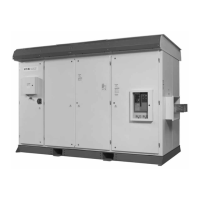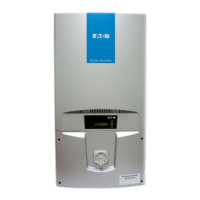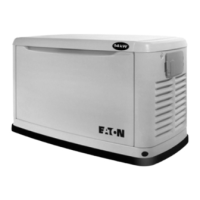15
Installation types
Eaton 1250W / 1500W / 1800W Inverter Operation and Installation Guide IM SP180164 / Rev D www.eaton.com
Installation types
Installation of the inverter will involve many common components, some which are shown below. Figure 5 shows some of
those components and their relevance with each other in a standard heavy truck or recreational vehicle.
Note: E models do not have AC terminal inputs or AC terminal outputs. Therefore the instructions regarding AC input, AC out-
put, AC transfer switch, battery charger or testing in Utility Grid Mode do not apply.
Definitions
AC Shore Power – “Shore power” refers to AC input power from a utility grid, generator, or other AC source. To charge
batteries and pass power on to an AC load, a source of nominal 115Vac, 60Hz is needed. This source is predominantly the
utility grid (wall power, power company) or an AC generator. In the case of multiple sources, an automatic or manual AC
source selector switch can be used.
The AC source going into the inverter must have a neutral conductor bonded to ground (i.e. 3-prong wall cable). When the
inverter is passing AC power through, it relies on the input being grounded to ensure the power delivered to a sub-panel is
bonded. See “AC Output Neutral Bonding” on next page for further information on bonding relay operation.
ote:N The grid power source utilized must be branch breaker or branch fuse protected at 30A maximum.
DC fuse or
DC fuse and
disconnect
OUT
12V dual purpose
or deep cycle
battery N
AC branch
or fuse
30A max
shorepower
12V dual purpose
or deep cycle
battery 1
Figure 5. Installation wiring diagram
CAUTION
Equipment damage -
• Special care should be taken not to apply reverse polarity to DC input. Permanent damage will occur and is not covered
by warranty.
• Do not connect the output of the inverter to what is known as a “multi-wire branch circuit”
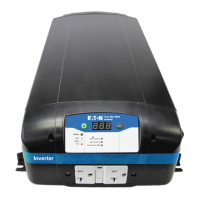
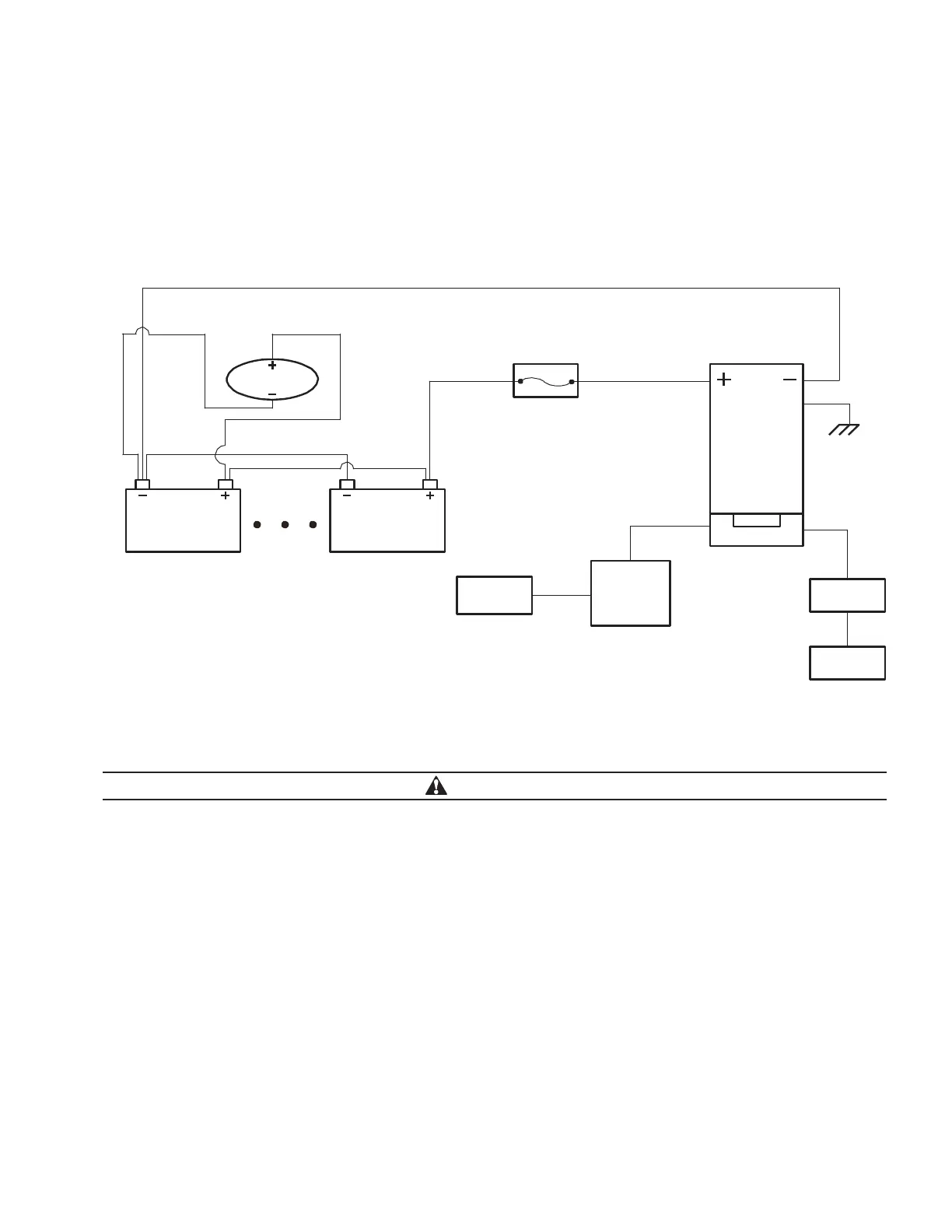